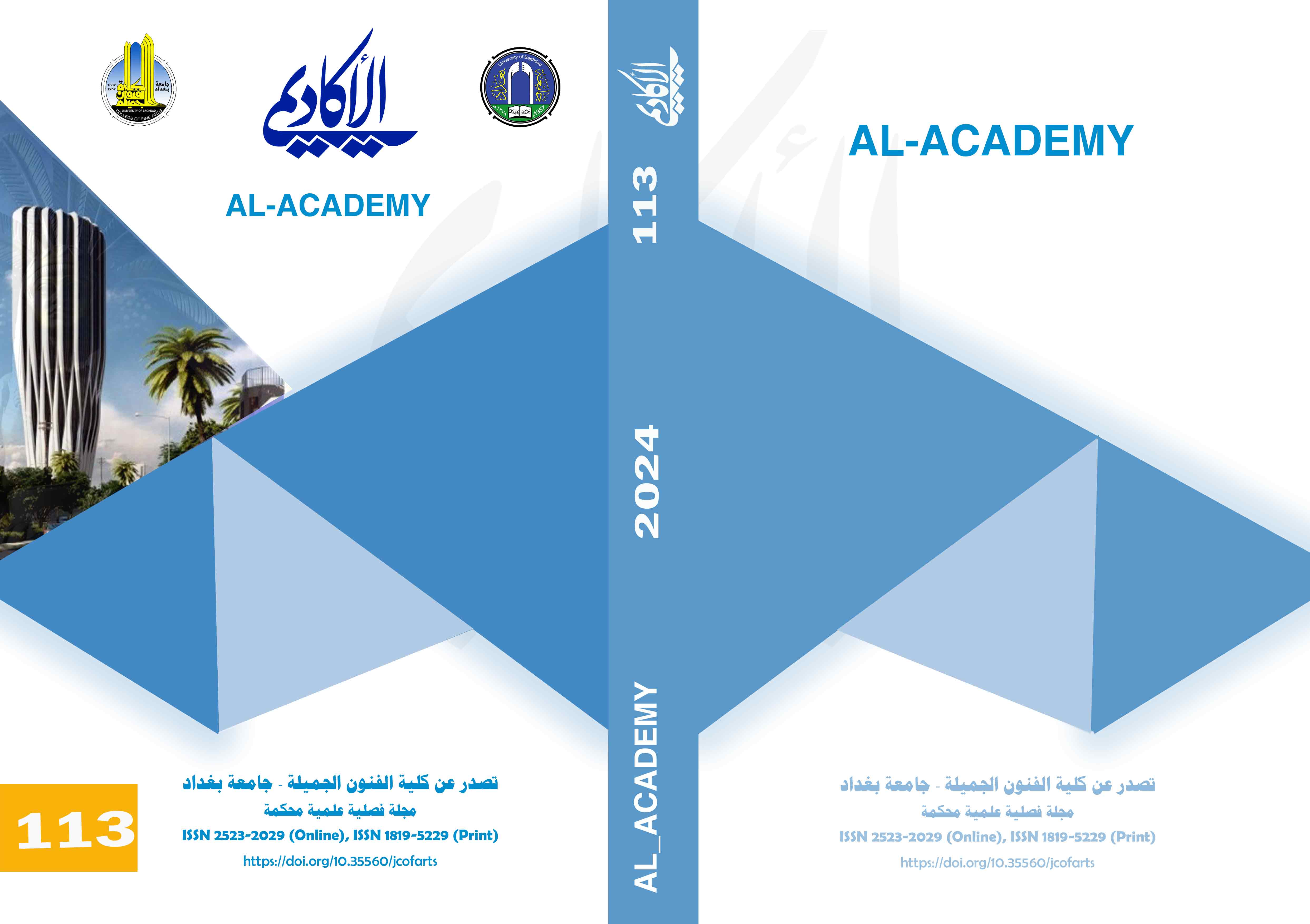Formal changes and their implications for graphic design
DOI:
https://doi.org/10.35560/jcofarts1270Keywords:
Visual Changes Reflection Graphic DesignAbstract
The formal changes in the graphic designs come according to the determinants of the visual visual formation of the output of the design elements, which depend in their structure on work mechanisms that stem from the design idea and end with the processes formulated in the visual field. Which governs the appearance of the formal change because it relies on the principle of the external and the external in its patterns and formations. Thus, a group of formal changes to the general appearance of the design achievement can be related to the design industry, and change is governed by several factors and influences that contribute to the establishment of new relationships between the components or elements of the design achievement. Therefore, the design must It is in contact with its environment, culture, heritage and beliefs, which in turn contribute to the crystallization and embodiment of its stylistic features that coincide with temporal and spatial shifts in the development of designs, as well as the presence of incentives for building blocks that work to develop its style and its creative transformation, especially since the creative change is linked to the aesthetic taste of the era represented by the values, ideals and beliefs found in A specific environment that the designer employs while receiving him through his feelings and translating them in a way that suits his culture and inclinations, and the new incentive is the determinant of the content of the design work.
The research included conclusions, including the following: This change in concepts and terminology was reflected positively in the artistic and literary field and in design, which acquired new concepts, including pre-modernity, modernity, and post-modernism, and were accompanied by some trends, including structuralism, semiotics, and deconstruction, and design institutions took knowledge circles from them. In radical change and change in dealing with topics and liberation from previous restrictions.
References
Abdel Hussein, M. (2018). Form and content in magazine cover design. Baghdad: College of Fine Arts, University of Baghdad, Al-Academy Journal, Issue 88.
Abdel Majeed, H. (2011). Social change in modern Islamic thought. Virginia: Higher Institute of Islamic Thought.
Abdul Razzaq, H. (2000). Semiotic development in the structure of abstract form. Baghdad: University of Baghdad, College of Fine Arts, Master’s thesis.
Al-Alam, S. (1999). The art of press advertising. Cairo: Arab House for Publishing and Distribution.
Al-Julani, F. O. (1997). Social change - an introduction to the functional theory of change analysis Alexandria. Egypt: University Youth Foundation.
Al-Saadi, K. (2005). Shape theory and its applications in linear configurations. Baghdad: University of Baghdad, College of Fine Arts, Master’s thesis.
Casserer, E. (1988). Philosophy of symbolic forms. Beirut: Arab and Global Thought Magazine, Issue 3, National Development Center.
Hauser, A. (1981). Art and society throughout history. (F. Zakaria, Trans.) Beirut: Al-Moas for Studies and Publishing.
Lotion, N.-H. (2006). Semantics: study and application. Egypt: Modern University Office.
Mansour, A.-A. (1996). Psychology of perception. Damascus: Damascus University.
Radi, H. (1986). Susan Langer's philosophy of art. Baghdad: House of General Cultural Affairs.
Razouk, A. (1977). Encyclopedia of psychology. Beirut: Arab Foundation for Publishing Studies.
Read, H. (1983). Present art. (S. Ali, Trans.) Baghdad: Al-Hurriya Printing House.
Saleh, Q. (1989). The psychology of perception of shape and color. Baghdad: House of General Cultural Affairs.
Saliba, J. (1995). A philosophical dictionary of Arabic, French, English and Latin words. Beirut: Lebanese Book House.
Sarhan, S. (2020). Expressive dimensions of presidential figures in graphic design. Türkiye: Reis Magazine.
Sarhan,, S. (2021). Manifestations of the other in graphic design. Baghdad: College of Fine Arts, University of Baghdad, Al-Academy Journal, Issue 100.
Wafa Jassim and others Muhammad. (2022). The effectiveness of animation in advertising promotion. Türkiye: Reis Magazine.
Downloads
Published
Issue
Section
License
Copyright (c) 2024 Sahar Ali Sarhan, Ruqaya Kazem Ahmed

This work is licensed under a Creative Commons Attribution 4.0 International License.













